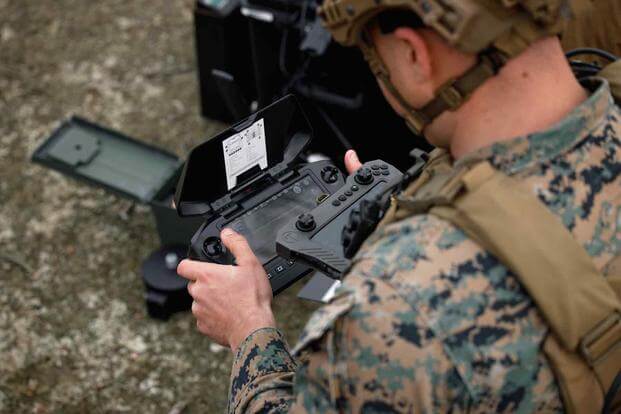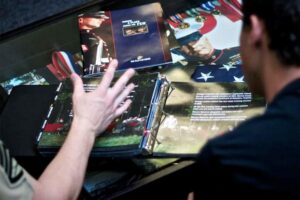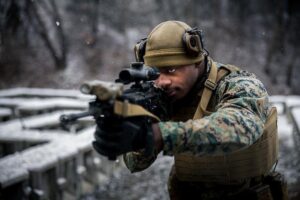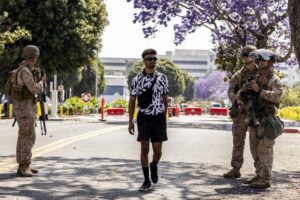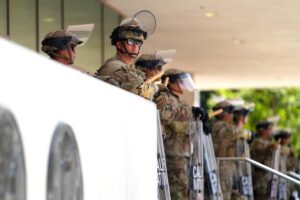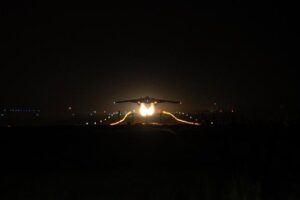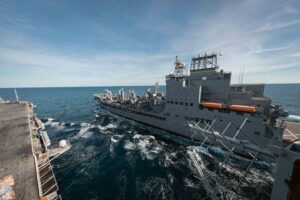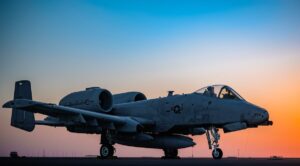The Marine Corps is set to broaden its drone capabilities with the creation of competitive drone teams throughout the fleet in the coming year, a senior officer revealed on Wednesday. This move aims to enhance the Corps’ unmanned aerial vehicle (UAV) program by leveraging the competitive spirit and technical prowess of its personnel.
The initiative follows the establishment of the Marine Corps Attack Drone Team (MCADT), a pioneering unit stationed at Quantico, Virginia, which serves as a hub for the Marine Corps’ evolving UAV strategy.
Launched in January, the MCADT is an all-volunteer unit designed to address the global surge in drone technology. The team incorporates insights from the Ukraine conflict, competes against other military branches, and sets a precedent for future Marine Corps drone teams.
According to Lt. Gen. Benjamin Watson, commanding general of Training and Education Command, starting next fiscal year on October 1, the Marine Corps will hold an attack drone competition. “We’ll field teams from across the Marine Corps to compete internal to the service,” Watson stated during a media event at the Modern Day Marine expo in Washington, D.C.
The competition is intended to accelerate the development of the Marine Corps’ drone program in a non-combat environment, unlike the rapid adaptation seen in Ukraine. Although specific units for the competition were not mentioned, the goal is to foster innovation and tactical advancement.
Watson remarked, “The closest thing we can do is put ourselves out there in competition, and so the attack drone team really is our mechanism for forcing that, putting the service’s reputation on the line with not only the other services, but a bunch of 14-year-olds with skinny arms and long hair and glasses that are probably going to kick our ass the first time we get out there in the drone competition.”
He further commented on the pressure of competition, stating, “But we think that puts us under a level of pressure that will help us to iterate faster, particularly in the first-person-view drone space, which is one of the places we’ve got the most room to grow.”
The integration of drones into the Marine Corps is not without hurdles. Challenges such as airspace management and parts acquisition have slowed progress. Military.com previously reported on leadership concerns over keeping pace with drone technology advancements.
Col. Sean Hoewing, director of the Capabilities Development Directorate’s Aviation Combat Element, highlighted the importance of balancing new technologies with traditional Marine Corps values. “I think what we’re desperate to do inside the Marine Corps at this point is adopt new technologies that we’re seeing being used throughout the world, but hold on to what we value as Marines in the way that we fight,” he explained.
Despite these challenges, MCADT members have been addressing issues such as part durability and drone maneuverability over the past four months. Cpl. Hunter Zenoni, a weapons repairer with the team, has been working on identifying and reproducing parts that wear out quickly, while others focus on enhancing drone control techniques.
Cpl. Timothy Brockup, an infantryman with the MCADT, acknowledged the ongoing struggle with task organization and tactical application of drones. “But it’s a struggle that we are overcoming with just more repetitions, practice and the more insight and research we put into this,” he added.
The MCADT is slated to participate in its first competition in early June against the Army‘s 75th Ranger Regiment. This event is expected to serve as a prototype for future intra-service drone competitions.
“We’re not too terribly worried,” Brockup stated, noting the team’s rigorous training and tactical reviews in preparation for the upcoming challenge. Confidently, he added, “if you want to put it on the record, by the way — yeah, we’re gonna win.”

